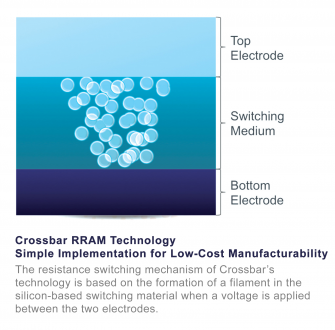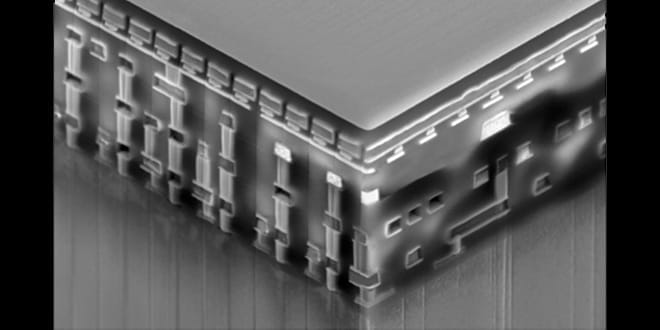Packing a terabyte of blazing-fast solid state storage into a form factor the size of a postage stamp sounds like the work of (incredibly nerdy) science-fiction, but Crossbar, a Santa Clara memory start-up, is closing in on commercialization of just that with their take on non-volatile resistive RAM storage (often abbreviated to ReRAM or RRAM). Additionally, the company claims that their technology has 20 times better write performance, 20 times lower power consumption, and 10 times the endurance of the NAND flash memory used in today’s solid state drives.
In short, holy cow!

RRAM itself is far from a new innovation, with Dr. Yakov Roizin of integrated circuit heavyweight TowerJazz noting that the basic technology behind the memory was invented during the 1960s. Being an older technology hasn’t stopped industry giants from developing a renewed interest, however, with companies like Samsung, Globalfoundries, Taiwan Semiconductor, and Seagate all filing patents related to RRAM in the past handful of years.
Crossbar’s major innovation lies in their solution to the biggest problem facing RRAM production: “sneak path current”, in which electrical current leaks from its path to the desired memory cell and into adjacent cells, hurting the ability for an RRAM drive to interpret data. To combat this, Crossbar uses what they call a “Field Assisted Superlinear Threshold Selector Device”, which reduces sneak path current by placing undesired cells in a low-voltage state.
The initial markets for Crossbar-based drives may come as a surprise. As Kristian Vättö from Anandtech notes,
“At first Crossbar is aiming at the embedded market and is licensing its technology to ASIC, FPGA and SoC developers with first samples arriving in early 2015, and mass production scheduled for late 2015 or early 2016.”With this in mind, it seems that Crossbar’s RRAM technology would likely be implemented on phones, tablets, wearable tech, and other mobile consumer electronics before entering the PC storage market. Mobile manufacturers could have a synergistic relationship with RRAM’s (alleged) lower power consumption, seeing as every milliwatt matters in the fight for high battery-life when a flagship phone like the Samsung Galaxy S5 consumes a mere 6.2 watts of power at max load, according to Florian Wimmer of NotebookCheck.net.
Unfortunately, it will be quite some time before RRAM storage shows up in a high-performance gaming PC near you. However, with the way the technology is shaping up, it looks like it could very well be worth the wait.
What's your take on Crossbar's claims for RRAM storage? Do you think this technology would be better suited for PCs or for mobile devices? Let us know in the comment section below!







